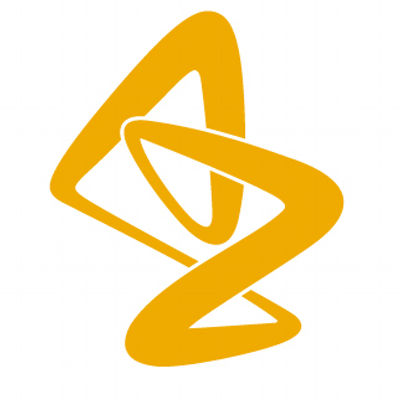AstraZeneca

- Country
- 🇬🇧United Kingdom
- Ownership
- Public
- Employees
- 89.9K
- Market Cap
- $270.3B
- Website
- http://www.astrazeneca.co.uk
- Introduction
AstraZeneca Plc is a holding company, which engages in the research, development, manufacture, and commercialization of prescription medicines. The company was founded on June 17, 1992 and is headquartered in Cambridge, the United Kingdom.
Clinical Trials
3.8k
Trial Phases
6 Phases
Drug Approvals
31
Drug Approvals
- Prev
- 1
- 2
- 3
- 4
- Next
Clinical Trials
Distribution across different clinical trial phases (2774 trials with phase data)• Click on a phase to view related trials
Safety, Tolerability and Pharmacokinetics of AZD1613 in Adults With Autosomal Dominant Polycystic Kidney Disease
- Conditions
- Autosomal Dominant Polycystic Kidney Disease
- Interventions
- Drug: AZD1613 - Part ADrug: Placebo - Part ADrug: AZD1613 - Part BDrug: Placebo - Part B
- First Posted Date
- 2025-11-14
- Last Posted Date
- 2025-11-14
- Lead Sponsor
- AstraZeneca
- Target Recruit Count
- 40
- Registration Number
- NCT07228364
- Locations
- 🇬🇧
Research Site, London, United Kingdom
An Open-label Study of AZD0120 in Adults With Multiple Sclerosis
- Conditions
- Multiple Sclerosis
- Interventions
- Biological: AZD0120 - Regimen 1Biological: AZD0120 - Regimen 2
- First Posted Date
- 2025-11-04
- Last Posted Date
- 2025-11-04
- Lead Sponsor
- AstraZeneca
- Target Recruit Count
- 18
- Registration Number
- NCT07224373
- Locations
- 🇺🇸
Research Site, Milwaukee, Wisconsin, United States
A Phase IIb Study to Evaluate the Effect of Dapagliflozin in Combination With Baxdrostat Compared With Baxdrostat on Albuminuria in Participants With Chronic Kidney Disease and High Blood Pressure.
- Conditions
- Chronic Kidney Disease and Hypertension
- Interventions
- Drug: Baxdrostat/dapagliflozinDrug: Baxdrostat/Placebo
- First Posted Date
- 2025-10-30
- Last Posted Date
- 2025-10-30
- Lead Sponsor
- AstraZeneca
- Target Recruit Count
- 218
- Registration Number
- NCT07222917
- Locations
- 🇬🇧
Research Site, London, United Kingdom
A Study to Assess the Safety, Tolerability, and Pharmacokinetics of a Single Ascending Dose of AZD0292 in Healthy Japanese Participants
- Conditions
- Healthy Participants
- Interventions
- Drug: Placebo
- First Posted Date
- 2025-10-29
- Last Posted Date
- 2025-10-29
- Lead Sponsor
- AstraZeneca
- Target Recruit Count
- 18
- Registration Number
- NCT07222254
Study of Patient With Frequent COPD Exacerbations
- Conditions
- Chronic Obstructive Pulmonary Disease (COPD)
- First Posted Date
- 2025-10-29
- Last Posted Date
- 2025-10-29
- Lead Sponsor
- AstraZeneca
- Target Recruit Count
- 2000
- Registration Number
- NCT07221981
- Locations
- 🇷🇺
Research site, Yekaterinburg, Russia
🇷🇺Research site "OOO Energy of health", Saint Petersburg, Russia
- Prev
- 1
- 2
- 3
- 4
- 5
- 670
- Next
News
Artios Pharma Raises $115M Series D to Advance Next-Generation DNA Damage Repair Cancer Therapies
Artios Pharma secured $115 million in Series D funding to advance its oncology pipeline focused on DNA damage repair mechanisms beyond traditional PARP inhibitors.
Fortress Biotech Reports Strong Q3 2025 Results with Strategic Asset Sales and Pipeline Advances
Fortress Biotech achieved a 20.5% increase in net revenue to $17.6 million in Q3 2025, driven by strong performance from its dermatology products portfolio.
Scripta Therapeutics Raises $12M to Target Transcription Factors for Disease-Modifying Therapies
Oxford-based Scripta Therapeutics emerged from stealth with a $12M seed round to pioneer a biology-first approach to drug discovery targeting transcription factors.
CMS Launches GENEROUS Model to Implement Most-Favored-Nation Pricing for Medicaid Prescription Drugs
The Centers for Medicare & Medicaid Services announced the GENEROUS Model, a voluntary pilot program launching in 2026 that will allow participating state Medicaid programs to purchase select drugs at prices aligned with those paid in other developed countries.
Axsome Therapeutics Acquires Novel GABA-A Receptor Modulator AZD7325 for Epilepsy Treatment
Axsome Therapeutics has acquired exclusive global rights to AZD7325, a novel oral GABAA receptor α2,3 subtype-selective positive allosteric modulator, through the acquisition of Baergic Bio from Avenue Therapeutics.
AstraZeneca Acquires SixPeaks Bio for $300M to Advance Muscle-Preserving Obesity Treatments
AstraZeneca exercised its option to acquire obesity startup SixPeaks Bio for $170 million upfront, with an additional $30 million in two years and up to $100 million in regulatory milestone payments.
Neok Bio Emerges with $75M to Develop Dual-Targeting ADCs for Cancer Treatment
Neok Bio launched with $75 million in Series A funding to develop bispecific antibody-drug conjugates that simultaneously target two distinct cancer proteins.
BioInvent Reports Promising Safety and Efficacy Data for Triple Combination Therapy in Relapsed/Refractory Non-Hodgkin's Lymphoma
BioInvent will present early Phase 2a data at ASH 2025 showing that the triple combination of BI-1206, rituximab, and acalabrutinib is safe and well-tolerated in relapsed/refractory NHL patients.
FDA Proposes Streamlined Biosimilar Approval Process to Reduce Drug Costs by 50%
The FDA announced new draft guidance to simplify biosimilar approval by reducing clinical testing requirements and shortening development timelines.
Alembic Pharmaceuticals Receives FDA Approval for Generic Ticagrelor 60mg Tablets for Acute Coronary Syndrome
Alembic Pharmaceuticals Limited received final FDA approval for its generic ticagrelor tablets 60mg, therapeutically equivalent to AstraZeneca's Brilinta.
